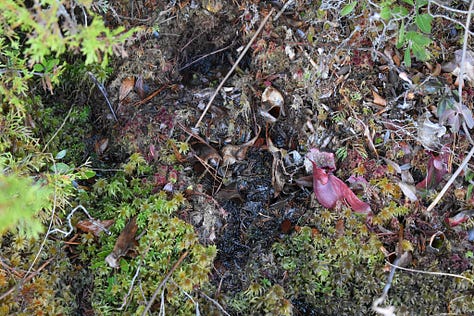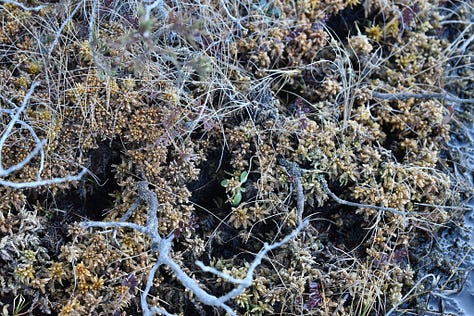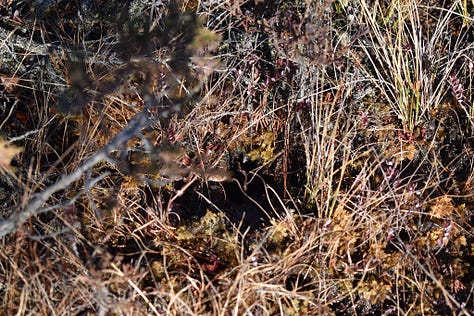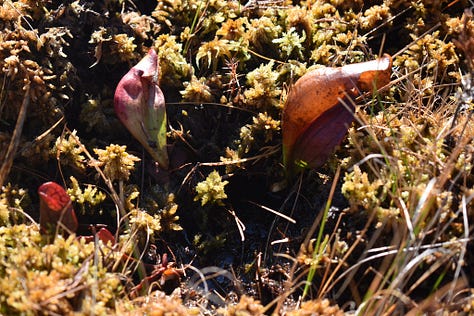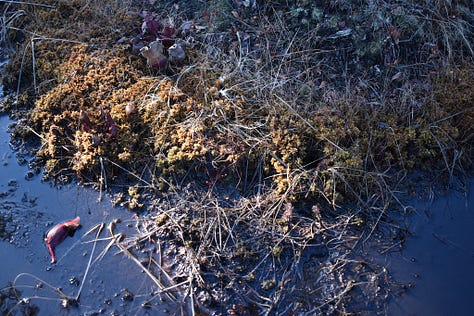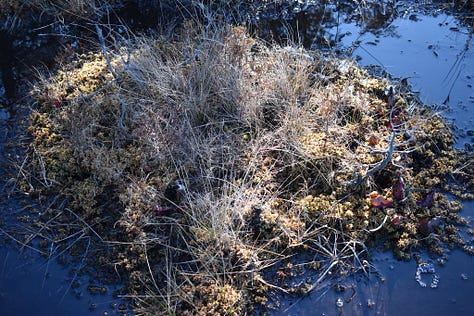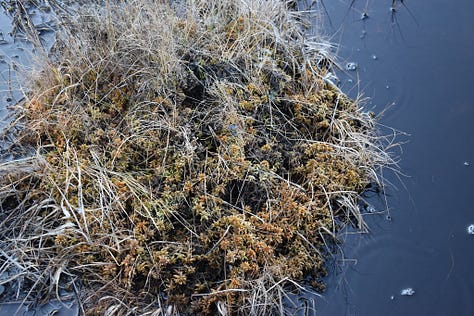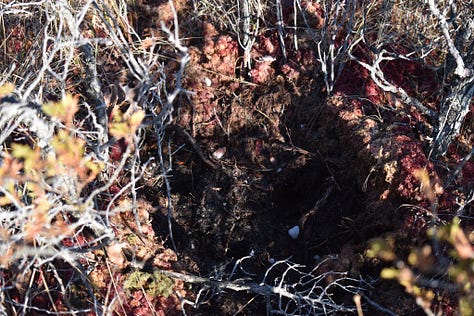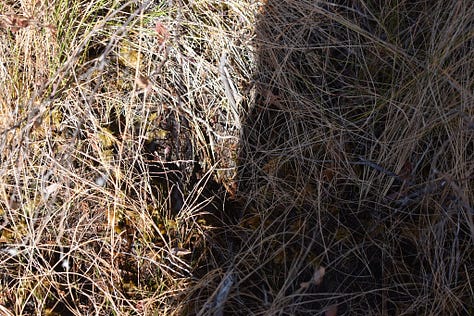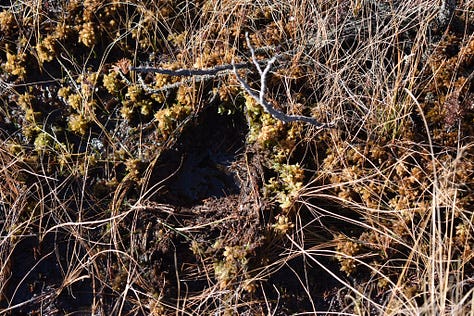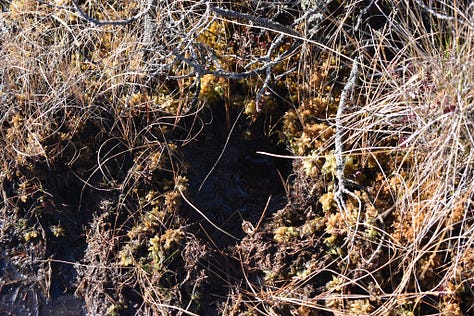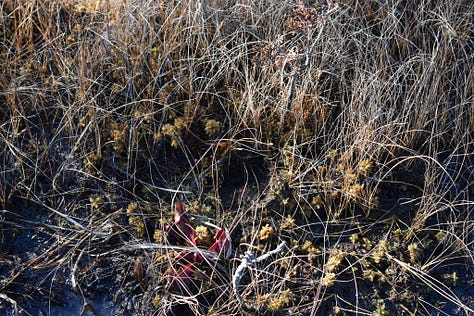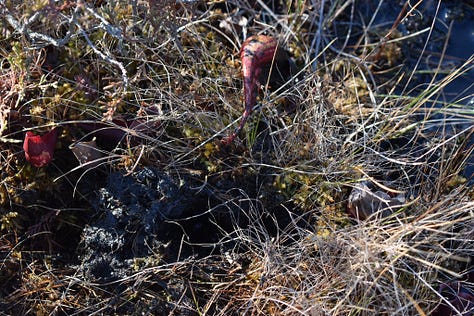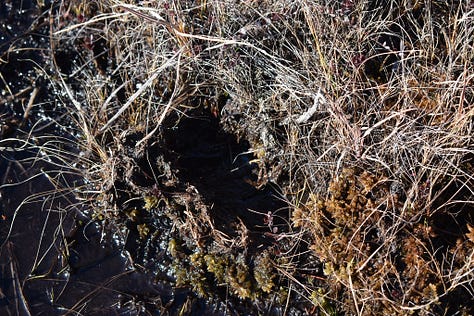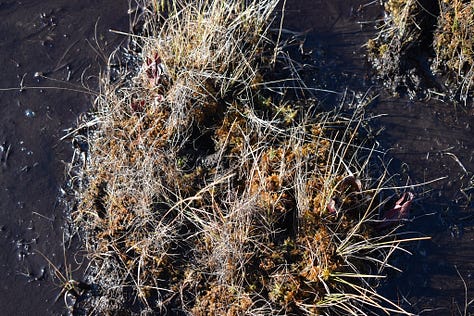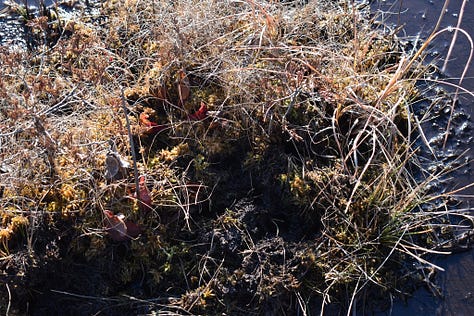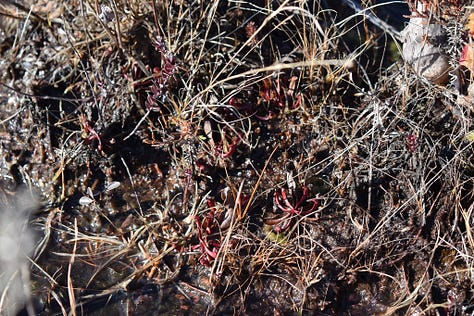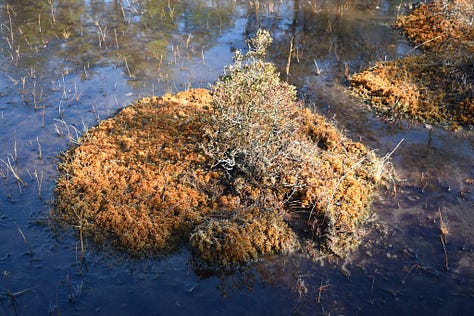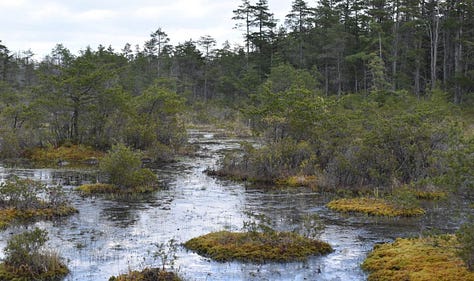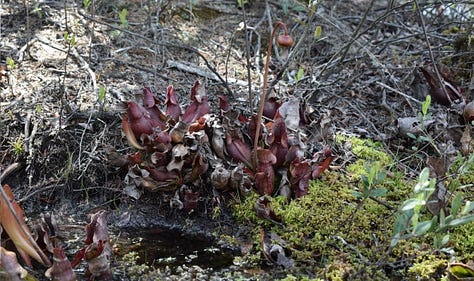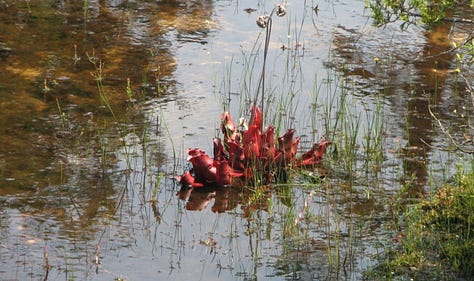MASS POACHING OF SARRACENIA PURPUREA IN THE NJ PINELANDS
A beloved site falls victim to poaching
I'm very dismayed to report the disappearance of hundreds of Sarracenia purpurea from a bog in a well-known, public nature trail and boardwalk within the Greenwood Wildlife Management Area in Ocean County, NJ. This site was one of the best places to observe many rare, native species of Pinelands bog flora growing together in a protected habitat, including numerous species of carnivorous plants. The public nature of this site has made the appreciation of this unique habitat and its diverse inhabitants possible for countless people. Unfortunately, it has also allowed for the theft of many of said inhabitants. The poachers removed well over half of all the adult S. purpurea at this location, including a majority of the flowering-size plants. I took photos of dozens and dozens of holes before giving up. Undoubtedly I missed many. Since it's winter, it was difficult to tell how much damage the poachers may have done to other plants during the Sarracenia removal; this site hosts other rare bog endemics including little curlygrass fern (Schizaea pusilla), dragon's mouth orchid (Arethusa bulbosa), and numerous Drosera and Utricularia.
The theft of most of the flowering S. purpurea is particularly damaging—only a tiny fraction of viable seed produced (seed not already destroyed within the pod by insect larvae) will make it to adulthood, and S. purpurea seedlings are incredibly slow-growing in situ. The tiny seedlings shown in the photos below are likely 3-4 years old. The population at this site will take years to recover to a fraction of its former size, if it can recover at all.
Upwards of an estimated 95% of Sarracenia habitat has already been destroyed in the US. The few remaining populations are now pressured not only by development, drainage of bog habitat for forestry, agricultural runoff, and fire suppression, but also by poaching. In this case, the disappearance of plants from a protected site specifically earmarked for preservation amidst continuing threats is even more disturbing. S. purpurea may have the widest range of any Sarracenia species, but it only occurs in patchy locations with suitable habitat. The loss of these plants from a public preserve in the NJ Pinelands, one of the major centers for remaining S. purpurea in the US, is a major blow to both the diversity of the plant populations themselves and to everyone who will no longer be able to appreciate the full beauty of this site. This sort of story is altogether too common for a time in which conservation has become more critical than ever. There is no substitute for the biodiversity that has been developing in these unique habitats for millennia—once it's gone, it's gone.
If anyone sees suspicious S. purpurea for sale on eBay or forums in the US or elsewhere, please let me know. Unfortunately, these plants will be very difficult to track down if they were destined for flea markets or the alternative medicinal herb industry. Relevant authorities with NJ Parks & Forestry and Environmental Protection have been contacted.
